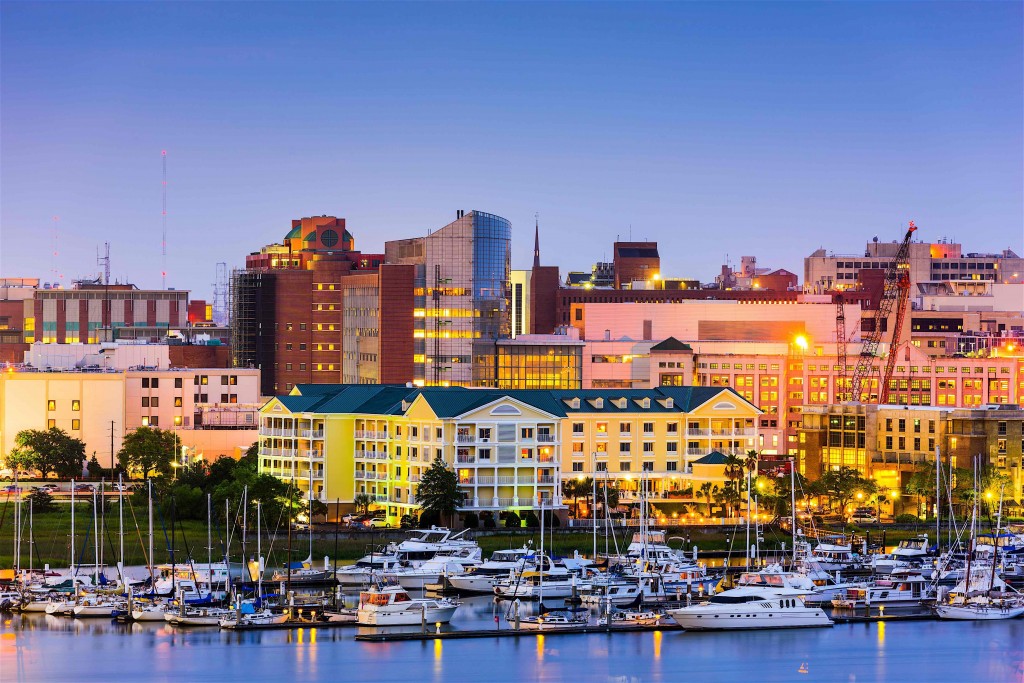The Charleston real estate market continues to pick up the pace in 2016. Home prices have grown relative to last year and now outpace the national average, while appreciation rates for Charleston real estate are among the most competitive in the country. Backed by a strong local economy, a boost in new housing construction, and one of the more affordable housing markets in the nation, the Charleston real estate market is shaping up to be one of the stronger housing markets in the country. That said, the Charleston real estate market is poised to experience continued success in the second-half of 2016.
Charleston, SC Real Estate Market Statistics:

The charm of the Charleston real estate market isn’t just in its well-preserved architecture and picturesque setting, but also it’s growing investment community. Comprised of the most desirable housing markets for homeowners, Charleston real estate investing continues to gain ground in 2016 as an investment market. The second quarter witnessed appreciation gains comparable to the national average; one-year appreciation rates were 6.4 percent, compared to 4.9 percent achieved by the rest of the country, while three-year rates for Charleston real estate reached 16.1 percent, below the national average of 17.8 percent. For those considering Charleston real estate investments, the following spotlights appreciation gains in previous years:
- Homes purchased in the Charleston, SC housing market one year ago have appreciated, on average, by $19,636. The national average was $14,963 over the same period.
- Homes purchased in the Charleston, SC housing market three years ago have appreciated, on average, by $47,790. The national average was $46,878 over the same period.
- Homes purchased in the Charleston, SC housing market five years ago have appreciated, on average, by $77,601. The national average was $82,353 over the same period.
- Homes purchased in the Charleston, SC housing market seven years ago have appreciated, on average, by $83,668. The national average was $77,054 over the same period.
- Homes purchased in the Charleston, SC housing market nine years ago have appreciated, on average, by $64,685. The national average was $31,126 over the same period.
The Charleston real estate market has fared well with the national average in terms of total equity. Price appreciation and principle payments in the last three years have boosted total equity growth since the recession. In the last nine years, as shown above, total equity gains for Charleston real estate have surpassed the national average in year one, three, seven and nine, with the biggest gain in year nine, as Charleston real estate appreciated by $64,685.
Charleston real estate investing should also take foreclosures into consideration. According to RealtyTrac, there were 753 properties in Charleston in some stage of foreclosure during the month of September. That represents a 38 percent increase from the previous month and a decrease of 19 percent from the previous year. Another factor influencing foreclosures is bank owned properties (REO). The number of REO properties in September rose 14.3 percent, compared to the previous month. For Charleston real estate investors, anytime the number of foreclosures is increasing, there are going to be investment opportunities.
Charleston, SC Real Estate Market Summary:

- Current Median Home Price: $260,100
- 1-Year Appreciation Rate: 6.4%
- 3-Year Appreciation Rate: 16.1%
- Unemployment Rate: 4.9%
- 1-Year Job Growth Rate: 3.0%
- Population: 127,999
- Median Household Income: $50,873
Charleston, SC Real Estate Market (2016) — Q2 Updates:

The median home price for Charleston real estate was $260,100 during the second quarter, compared to the national average of $239,167. Although price growth has slowed, home prices continue to grow relative to year. In addition, gains in the last years have extended the trend of positive price growth since the recession.
One factor influencing the Charleston real estate market in a positive way is the local economy. The second quarter saw an improvement in employment, as one-year job growth reached 3.0 percent, compared to the national average of 1.9 percent. Unemployment for Charleston was identical to the rest of the country during the second quarter, which was an improvement from the previous year. An up-and-coming economy is a positive sign for a healthy real estate market.
Two components in Charleston influencing each other are home affordability and new housing construction. The second quarter saw new housing construction extend 37.5 percent above the long-term average, while single-family housing permits settled at 2.9 percent, compared to the national average of 10.6 percent. Furthermore, home affordability for the Charleston housing market is among the lowest in the country. Homeowners paid 12.8 percent of their income to mortgage payments, whereas the national average paid 15.8 percent. This bodes well for homeowners, investors and renters alike.
Foreclosures are another element to pay consideration to. Although not nearly as high as other markets, the number of properties in Charleston in some stage of foreclosure could represent a unique opportunity for investors down the road. Additionally, the number of REO properties in Charleston was up during the second quarter, which could spark significant investment activity in coming months. As home prices continue to grow, savvy investors will continue to collect rental properties, especially with the way rents are going right now.
The Charleston real estate market is primed to see significant growth in the second quarter of 2016. The state of South Carolina is forecasted to experience higher price growth in the second-half, according to the National Association of Realtors (NAR), with prices rising 4.3 percent compared to the national average of 3.6 percent. In comparison to other markets, the Charleston real estate market is expected to see attractive growth in the second-half, which should continue for the next few years.